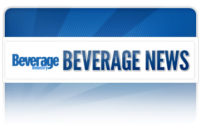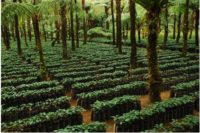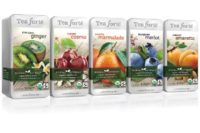Consumers still seeking a coffee fix
Price sensitivity causes at-home consumption growth



Single-cup coffees, such as brands affiliated with Green Mountain Coffee Roaster’s Keurig brewing system, have captured triple-digit growth this year in measured channels.









Overall retail sales of coffee in the United States reached nearly $7.6 billion in 2010, which is a 3.7 percent increase from the previous year, the Chicago-based research firm notes. Mintel expects the coffee category to grow approximately 12 percent in 2011 and to reach more than $8.5 billion in sales, but the research firm cautions that sales growth could be attributed primarily to the increase in coffee prices.
The ground coffee category reported a nearly 14 percent increase for close to $2.8 billion in dollar sales with a nearly 0.5 percent decline in unit sales in supermarkets, drug, gas, convenience and mass merchandise outlets, excluding Walmart, for the 52 weeks ending Oct. 2, according to data from Chicago-based market research firm SymphonyIRI. Following the same metrics, ground decaffeinated coffee increased 3.4 percent for $262 million in sales, but declined 8.8 percent in unit sales. Whole bean coffee also decreased nearly 5 percent in unit sales, but rose 2.7 percent in dollar sales to $337 million, according to SymphonyIRI data.
Household focus
Fitting into the at-home trend, the single-cup coffee market continued its expansion this year. According to SymphonyIRI data, sales of single-cup coffee totaled more than $414 million, which is a nearly 121 percent increase in dollar sales from the previous year in measured channels. Green Mountain Coffee Roasters (GMCR), Waterbury, Vt., dominates the market niche with its Keurig brewing system and K-Cup portion packs.
“Keurig K-Cups are the hottest story this year in coffee,” says Ty Law, U.S. research analyst for Euromonitor International, Chicago. “Keurig single-serve machines have been accepted by a wide variety of consumers due to the range of coffees you can get in the K-Cup format. While consumers are fairly brand loyal, they do enjoy flexibility. By buying the Keurig machine, you are not being locked into a particular brand or type of coffee.”
In its fourth quarter 2011 results released Nov. 10, GMCR notes that approximately 84 percent of the company’s nearly $2.7 billion in consolidated net sales in fiscal 2011 were from the Keurig single-cup brewing system, portion pack sales and related accessories. The company notes that the increase in K-Cup portion pack net sales, which totaled $475 million in the fourth quarter of 2011, was driven by a 76 percent increase in K-Cup sales volume, an 18 percent increase in K-Cup net price realization due to price increases implemented during fiscal 2011 to offset higher green coffee and other input costs, and a 10 percent increase in sales due to the acquisition of Canadian company Van Houtte.
Last month, Starbucks Corp., Seattle, began shipping Starbucks coffee and Tazo tea branded K-Cup portion packs for use in GMCR’s Keurig system.
“We have seen tremendous success in the premium single-cup category with Starbucks Via Ready Brew and look forward to expanding our portfolio in this high-growth segment by offering our consumers another way to enjoy a single cup of coffee,” says Jeff Hansberry, president of channel development for Starbucks.
Starbucks has positioned its Via Ready Brew line as a single-cup solution, Hansberry says. The company’s data shows that in the United States 55 percent of Via consumption takes place in the home, 25 percent at work and the remaining 20 percent while on-the-go. During its first year in retail channels, Starbucks Via reported $33.9 million in sales in measured channels according to SymphonyIRI data for the 52 weeks ending Oct. 2. The Via line includes seven varieties, including flavors and the most recently added House Blend and Breakfast Blend options.
SymphonyIRI includes Starbucks Via in the instant coffee segment that overall posted an 8.2 percent increase in dollar sales in measured channels for a total of $474 million in sales through Oct. 2. Euromonitor’s Law notes that Via has mainly been adopted by consumers who are unable to purchase fresh-brewed Starbucks and that the brand’s adoption might not signal a boon for instant coffee overall.
“The efforts by Starbucks have caused some concern to the previously dominant brands within the [instant coffee] market,” Law says. “However, I do not believe that consumers will be returning to the category in the long-run. Instant coffee is traditionally viewed as a commodity item purchased by those looking to save money. Starbucks Via is more of a premium product, so I do not think that the majority of consumers will switch brands. Via will likely drive in new consumers and be more of a niche category.”
Mintel’s coffee report notes that sales growth for instant coffee might come from Hispanic consumers, who are more likely to purchase instant options than other consumer groups, according to data cited by the research firm. Hispanic purchasing combined with the popularity of Via inspired Mintel to forecast that instant coffee sales will increase to $977 million in all channels in 2011, which would represent a 2.8 percent increase from 2010.
Cost concerns
An increase in commodity prices, including coffee beans and transportation costs, coupled with a growing demand for coffee in emerging markets such as India and China, caused price speculation, which spurred some coffee brands to raise retail prices. Starbucks Corp. implemented a 17 percent increase in bagged retail coffee prices effective in mid-July, according to industry sources. GMCR implemented a price increase in September 2010 and another in May that it noted improved net sales by approximately 13 percent compared to net sales for the third quarter of 2010, according to the company’s third quarter results released in July.
In August, The J.M. Smucker Co., Orville, Ohio, decreased the list price for its Folgers, Folgers Gourmet Selections and Dunkin’ Donuts retail brands by 6 percent. The decrease was attributed to declines in the green coffee futures market and partially offsets an 11 percent increase instituted by the company for the same brands in May and a 10 percent increase for Folgers and Dunkin’ Donuts brands in February.
Although price increases played a role in the category’s dollar sales growth this year, Mintel’s coffee report indicates that innovation also had a role in ground coffee’s growth. According to Mintel’s Global New Products Database (GNPD), the number of new retail coffee products released in the United States in 2010 increased 31 percent from 2009. Mintel says the increase represents a return to new product development after tightening research and development budgets in 2008 and 2009.
The marketer of Maxwell House and Yuban coffees, Kraft Foods, plans to roll out premium coffee brand Gevalia to retailers in January. During its third quarter earnings conference call Nov. 2, Irene Rosenfeld, chairman and chief executive officer of Kraft Foods, Northfield, Ill., noted that the company is delighted by the retail response to Gevalia, expects very strong distribution for the coffee and that the brand will enable Kraft Foods to participate fully in the premium coffee segment in the United States.
In March, Starbucks Corp. began direct management of its packaged coffee business, which previously was operated in collaboration with Kraft Foods. This fall, Starbucks announced the introduction of Starbucks Blonde Roast, which is in response to the company’s research that more than 40 percent of U.S. coffee drinkers prefer a lighter roast coffee, Hansberry explains. The new light coffee variety also provided an opportunity for the company to introduce a roast stratification system.
“We know from research that customers look for flavor and intensity first when shopping for coffee,” Hansberry says. “Because of this, you will see our coffees organized by roast — Blonde, Medium and Dark — starting this winter. This new architecture reflects Starbucks’ roast spectrum and taste variety making it simpler for consumers to find a coffee that appeals to them most.”
Starbucks’ division Seattle’s Best Coffee introduced its Level System packaging nationally early this year. The Level System uses bold, bright colors and numbers to help consumers easily find a coffee that suits their taste profile, explains Jenny McCabe, director of communication and public relations for Seattle’s Best Coffee. The Level System has helped Seattle’s Best Coffee double distribution in key grocery and mass merchandise accounts, McCabe says.
Mintel also notes that 21.2 percent of new coffee launches in its GNPD in 2010 were private label coffee products. The research firm’s coffee report highlights that private label coffees have become more sophisticated in recent years with many being relatively well-positioned to compete with premium national brands.
Ready-made convenience
SymphonyIRI data reports the ready-to-drink (RTD) cappuccino and iced coffee segment grew 8.7 percent for $850 million in sales in measured channels through Oct. 2. In its coffee report, Mintel attributes RTD coffee’s performance, which is projected to continue to grow, to the demand for sweet drinks among young adults and the introduction of coffee-energy drink combinations that also appeal to younger consumers.
Offered through the North American Coffee Partnership (NACP), a joint venture between Starbucks Corp. and PepsiCo Inc., Starbucks Doubleshot Energy+Coffee is a prime example of this trend. Doubleshot is the No. 2 seller in the RTD cappuccino and iced coffee segment with $255 million in sales and Doubleshot Light reported $9.1 million in sales, according to SymphonyIRI data in measured channels through Oct. 2.
Fitting in the energized niche, Cold Star Inc., Mount Ephraim, N.J., offers the CafFusion line of coffee-infused energy drinks. Available in Java Jolt, Mocha Blast and Vanilla Vortex, CafFusion varieties are made with guarana and ginseng and provide a good source of calcium, says Hank Harris, president and chief executive officer of Cold Star. Harris says that although CafFusion is a great alternative to energy drinks, that was not necessarily the brand’s intended target.
“It’s kind of catching a couple of different worlds,” he says. “We weren’t realizing that we were going to be able to do that, but we’re capturing the iced coffee drinkers as well as the energy drinkers. And we’re finding that they’re both excited about having the extra. The people who typically favor the energy drinks are very pleased with the coffee flavors and vice versa.”
Euromonitor’s Law notes new entries have injected interest into the RTD market, including Seattle’s Best iced canned lattes, which also are offered through NACP, and Illy Issimo, which is produced and marketed through a joint venture between Atlanta-based The Coca-Cola Co. and Italian company Illycaffe.
Starbucks-owned Seattle’s Best expanded its RTD latte line nationally and posted $16.6 million in sales in food, drug, gas, convenience and mass merchandisers, excluding Walmart, for the 52 weeks ending Oct. 2. The line includes Iced Latte, Iced Vanilla Latte and Iced Mocha Latte varieties with 130 calories in each 9.5-ounce can.
“With this move, we’re continuing to deliver on our ‘Anywhere Great Coffee Is Needed’ strategy by bringing a new kind of convenience to our iced coffee, which is the fastest growing segment in premium coffee,” McCabe says.
Euromonitor’s Law notes that in contrast to energy drinks, RTD coffee can fit into the health and wellness trend through natural product formulation and claims. Available in select markets, all-natural Illy Issimo reported $3.8 million in sales in measured channels through Oct. 2, according to SymphonyIRI data. Illy Issimo’s Latte Macchiato, Caffé, Cappuccino and newly introduced Caffé No Sugar and Mochaccino varieties are available in retailers including CVS, Walgreens, CostPlus World Market and grocery stores such as Ralphs, Shoprite and Safeway stores in Los Angeles, San Francisco, Philadelphia and New York City, according to Tom Larsen, general manager of Illy Issimo for Venturing and Emerging Brands for The Coca-Cola Co. The brand’s varieties take inspiration from Italy’s Illycaffe and are made with a blend of premium Arabica beans that are handpicked from nine types of coffee.
“Illy Issimo’s target consumers are coffee aficionados/foodies who enjoy the finest, best quality foods and beverages,” Larsen says. “They are men and women between 30 to 40 years old and typically higher educated world travelers. Many Illy Issimo consumers are familiar with Illy coffee from their travels in Europe.”
Illy Issimo added Caffé No Sugar and Mochaccino varieties this May. Caffé No Sugar caters to the 30 percent of coffee consumers who drink their coffee without sugar or cream, Larsen says. Mochaccino, which is made with premium Italian cocoa brand Domori, offers a flavor to consumers who are looking for an indulgent chocolate taste, he says.
RealBeanz, Brooklyn, N.Y., recently reformulated and repackaged its line of all-natural RTD coffee. Founder Avi Blau says he first launched RealBeanz because he was inspired by the segment’s leaders, but after consumer research that spanned age and ethnic groups, the company decided RealBeanz was a unique and different product within the RTD coffee segment.
RealBeanz is available in five varieties, each made with premium brewed beans and artificial growth hormone-free (rSBT-free) milk and functional ingredients. The regular varieties of RealBeanz are sweetened with cane sugar to fit in with the product’s premium positioning, Blau says. Its Cappuccino/Energize variety contains ginseng and vitamin B12 for an extra boost, the company says. The Caramel/Focus offering is infused with ginkgo biloba and eluthero root extract to help consumers focus, it notes. Designed to help fight infections, Mocha/Resist features immunity-boosting ingredients, according to the company. RealBeanz also is available in Diet Cappuccino/Trim & Fit that is low in calories, sweetened with stevia and fortified with fiber, chromium and conjugated linoleic acid.
During its research, RealBeanz found that many consumers, especially women, were looking for a decaffeinated iced coffee option, Blau says. In response, the company created Vanilla Nut/Relax that contains chamomile and lemon balm to address the relaxation trend, Blau says. The variety is now the line’s top-seller, he says. BI
Looking for a reprint of this article?
From high-res PDFs to custom plaques, order your copy today!











